Summary
Author: Zz, ChainCatcher Editor: TB, ChainCatcher Ethereum is undergoing a profound capital restructuring. Four forces are quietly converging: institutions enter through ETFs, banks begin to offer ETH trading services, and listed companies use ETH as a reserve asset.
Author: Zz, ChainCatcher Editor: TB, ChainCatcher Ethereum is undergoing a profound capital restructuring.
Four forces are quietly converging: institutions enter through ETFs, banks begin to offer ETH trading services, listed companies use ETH as a reserve asset, and large holders continue to buy on-chain.
The era of retail-driven speculation is coming to an end, and the transformation driven by institutions has already begun.
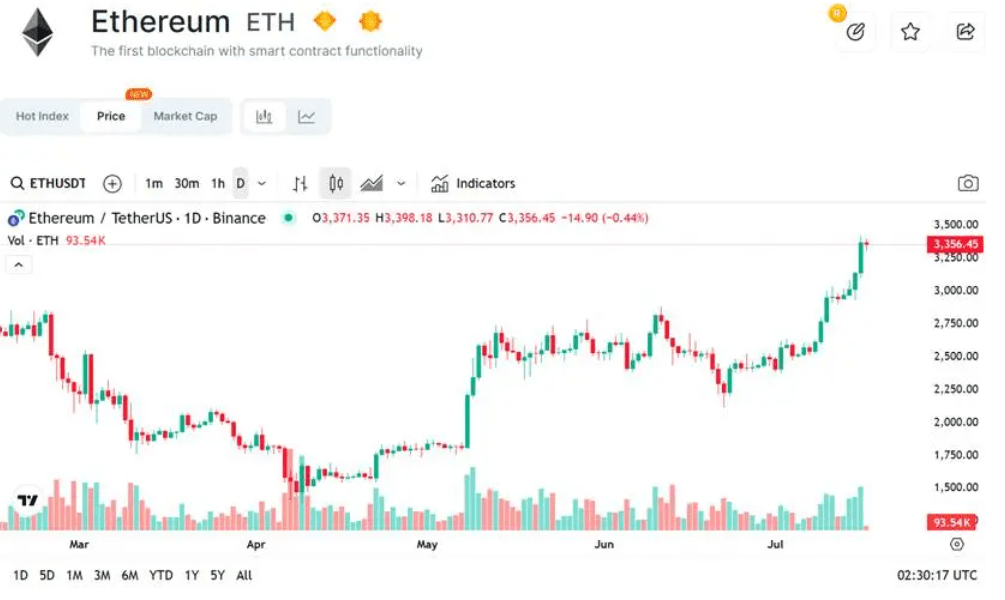
ETF fund influx: net inflow of $2.72 billion in a single week, BlackRock purchased $300 million in one day.
Wall Street's attitude is undergoing a fundamental shift.
SoSoValue data shows that last week, the net inflow of Bitcoin spot ETFs was $2.72 billion, marking five consecutive weeks of inflows. This indicates a changing perception of crypto assets in traditional finance. BlackRock's Bitcoin ETF IBIT had a net inflow of $1.76 billion in a single week, with a historical cumulative net inflow of $55.2 billion.
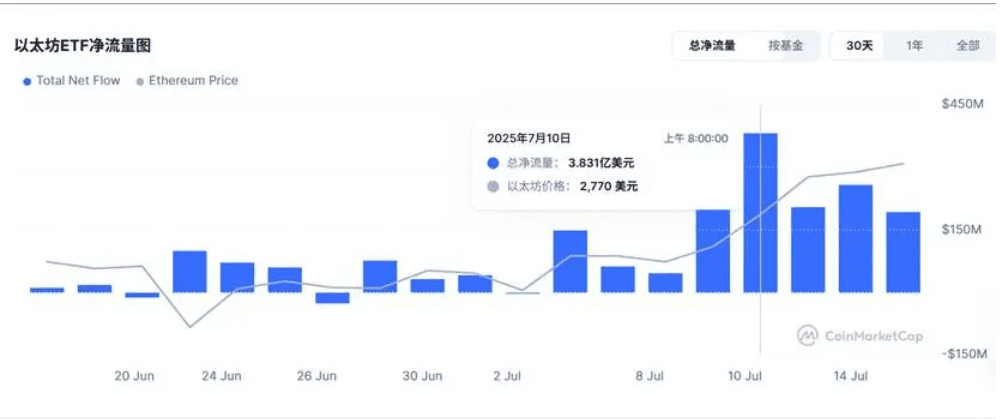
Ethereum's performance is even more striking. On July 10 alone, the total net inflow of U.S. Ethereum spot ETFs was $383 million, with BlackRock's ETHA contributing $300.9 million, followed by Fidelity. As of the time of publication, the total assets under management of all ETFs have reached $14.22 billion, accounting for 3.87% of the total market cap of ETH. The historical cumulative net inflow has reached $5.757 billion.
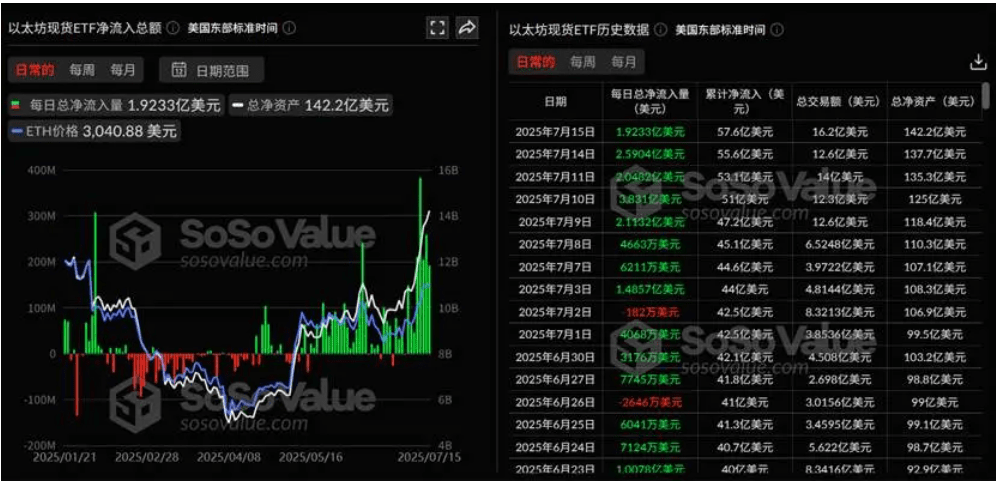
These ETH are locked in institutional cold wallets like Coinbase Custody. Each ETF subscription requires a real purchase of ETH in the spot market, creating continuous buying pressure.
A greater transformation is brewing. EM Capital analyst Eric Jackson pointed out that once ETH can be staked in ETFs and generate yields, conservative institutions like pension funds and insurance companies will also be able to participate. The market expects approval for staking ETFs by October 2025.
Standard Chartered opens ETH trading, JPMorgan's attitude has turned 180 degrees.
Traditional banks that once held a cautious attitude towards cryptocurrencies are quietly turning around. In July 2025, Standard Chartered announced a digital asset trading platform for institutional clients. It is the first major bank worldwide to offer physical ETH trading to clients.
Institutional traders can now buy and sell ETH directly through a familiar forex trading interface, enjoying bank-level security. Standard Chartered plans to launch Ethereum forward contracts, viewing ETH as a mainstream asset equivalent to the dollar and euro.
More dramatic signals come from JPMorgan. According to CNBC host Jim Cramer, JPMorgan CEO Jamie Dimon, who once called Bitcoin a 'fraud', is now 'fully embracing cryptocurrency'. This change in attitude speaks louder than any data.
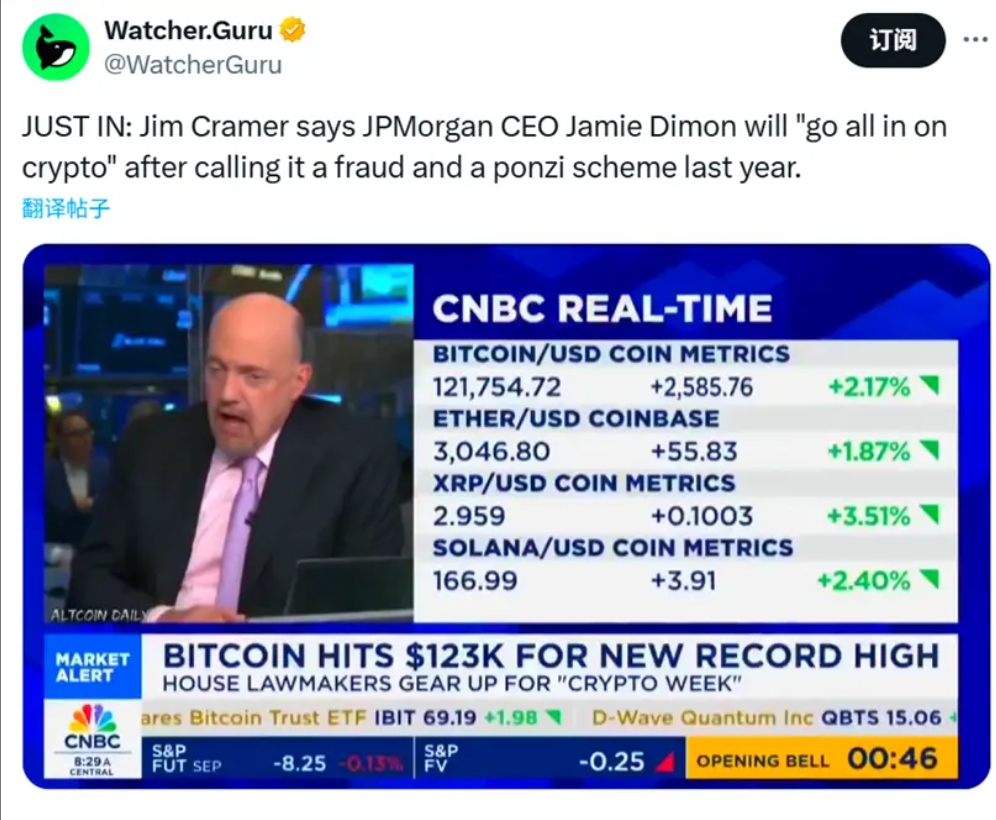
Corporate accumulation of ETH: SharpLink increased by 23% month-on-month.
- Batch of listed companies begins to use ETH as company reserves.
SharpLink Gaming (SBET) holds 280,706 ETH, with 99.7% staked for yield. Within a month, ETH holdings grew by 23%, with approximately $257 million allocated for further Ethereum purchases.
PayPal co-founder Peter Thiel acquired 9.1% of BitMine Immersion Technologies. This company has transformed from mining to an ETH reserve company, holding 163,142 ETH, valued at over $500 million.
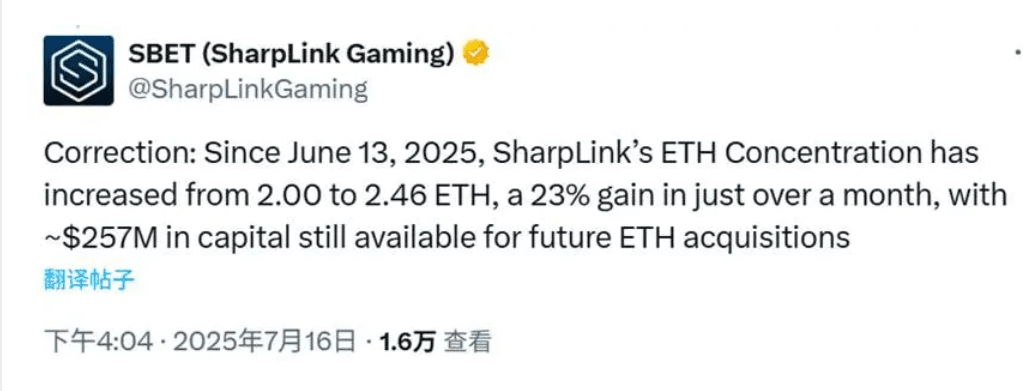
Traditional mining companies are also turning to ETH. Bit Digital has converted all Bitcoin reserves into Ethereum, currently holding 100,603 ETH. BTC Digital has set up a $1 million ETH reserve fund.
The stock prices of these companies are highly correlated with ETH prices. From early to mid-July, as Ethereum rose by 22%, BitMine Immersion's stock price surged by over 1100%, while SharpLink Gaming increased by 180%.
Large whales are accumulating on-chain, with a single-week withdrawal of $89.5 million.
On-chain data shows that large holders are continuously buying. Glassnode data indicates that large holders holding at least 10,000 ETH have increased their holdings from 37.56 million to 41.06 million over the past nine months, an increase of 9.31%, with concentration reaching a new high since 2020.
Specific movements tracked by Lookonchain:
Cumberland reportedly withdrew 34,883 ETH from Binance within a week, worth $89.5 million: a large holder bought 20,300 ETH within 10 days, all deposited into a DeFi protocol for long-term holding; another address withdrew 50,255 ETH from Binance over three weeks, worth $114 million. These actions of moving funds from exchanges to cold wallets or DeFi indicate that large holders are preparing for long-term holding. Matrixport research shows that Ethereum's 18% increase in July was driven by the upcoming 'crypto week' and policy expectations. Institutional allocations and Circle's listing expectations became the dominant forces. Among them, 17 percentage points came from the Asian trading session.
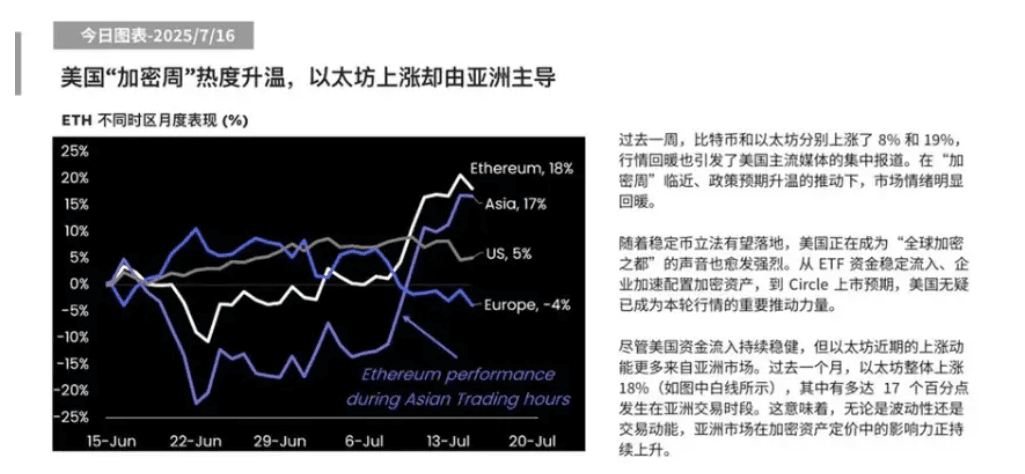
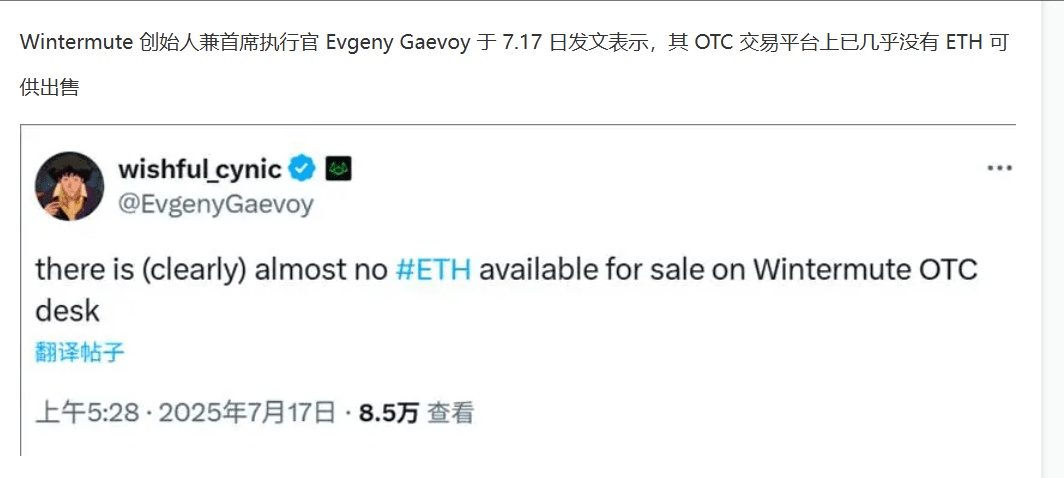
It is worth noting: when BlackRock's ETF has capital inflow, you can see on-chain that institutional addresses simultaneously withdraw large amounts of ETH from exchanges. The behavior of institutions and large holders is highly consistent.
What institutions are interested in: a vast stablecoin ecosystem and a record of zero downtime
Vitalik Buterin stated in an interview with CNBC in Cannes: 'People think institutions only care about scale and speed. On the contrary, many institutions tell us directly that what they value in Ethereum is stability and reliability, as well as its record of never going down in the past decade.'
More importantly: Ethereum is at the core of the $230 billion stablecoin market. The higher the ETH price, the more secure the network. Each expansion of the on-chain dollar scale requires more ETH for purchase and staking.
Regulation is also becoming clearer. The (GENIUS Act) will establish a federal regulatory framework for stablecoins, while the (CLARITY Act) clarifies regulatory responsibilities. Every time policy becomes clearer, it is an invitation for institutions to enter.
Transformation is happening
Four buying forces are working together: institutions continue to buy through ETFs, banks incorporate ETH into their service systems, and listed companies use ETH as a reserve asset while large holders accumulate significantly on-chain.
These forces promote each other: the compliance of ETFs encourages corporate allocations, proactive adoption by enterprises drives banks to improve services, and all positive signals are verified on-chain.
Ethereum is transitioning from an experimental platform to financial infrastructure. At the current price of $3,200, the market is re-pricing this long-term trend.
When traditional finance begins to turn, inertia is often stronger than expected. #Strategy增持比特币 $ETH



